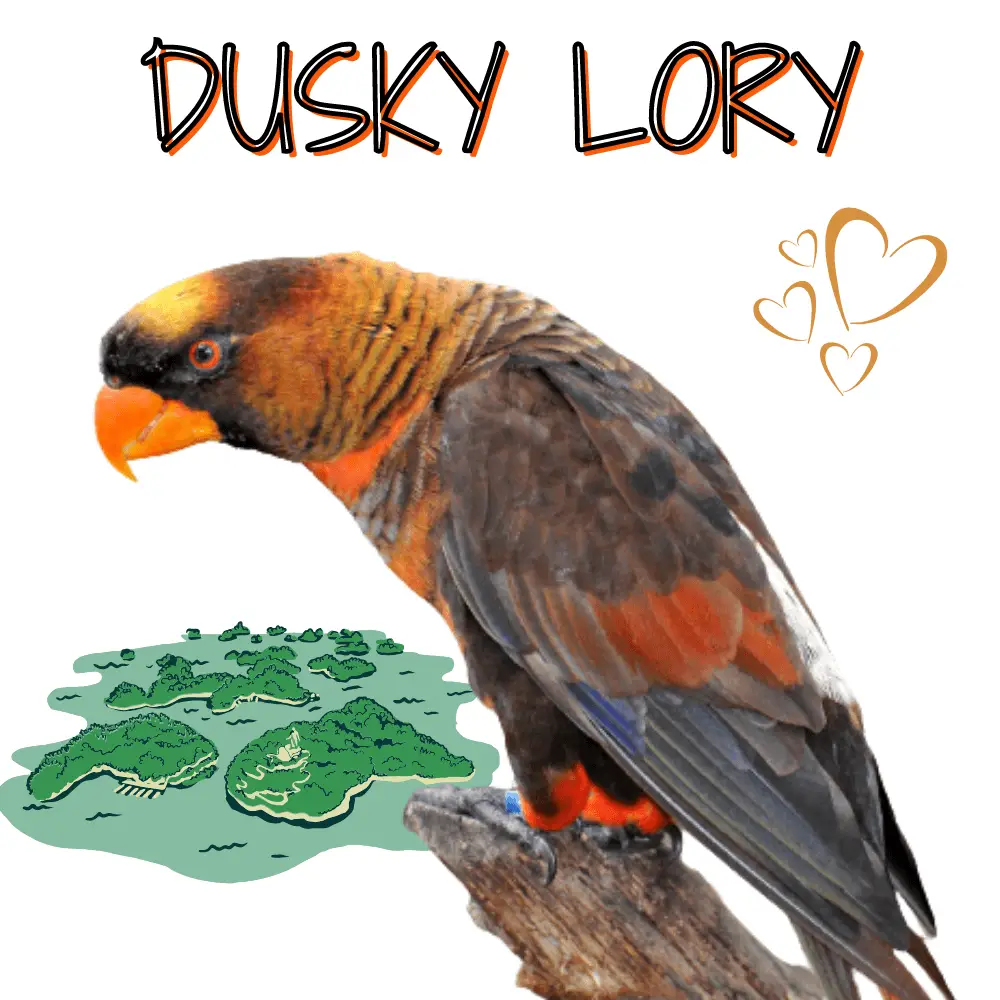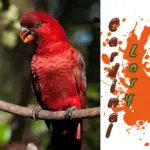
Dusky Lory 25 cm; 117–192 g. Variable, with yellow and orange morphs. Generally dusky brown, with feathers of cheeks, hindneck and upper breast edged yellow; bill orange with naked orange skin around lower mandible;
mid-crown, full ring around the neck, breastband, and central area of belly softly defined yellow, with yellow wing-edge, lower thighs, and staining in central tail feathers; lower back and rump creamy to white, lightly barred dusky.
Orange morph replaces yellow areas of plumage with orange except on crown; whitish edging to feathers of hindneck and upper breast; various intermediate forms occur.
Immature has more extensive yellow or orange markings on underparts, with dull yellowish back and rump, bill brownish.
Systematics History
In the past considered polytypic, with nominate race confined to birds of Salawati and nearby mainland, and all other populations grouped in race incondita. Monotypic.
Subspecies
Monotypic.
Distribution
New Guinea throughout, except for the highest areas; also islands of Yapen (in Geelvink Bay) and Salawati (in W Papuan Is).
Habitat
Hill rain forest and edge, secondary growth, partially cleared areas, groves, and suburban parks, occasionally savanna and plantations, up to 2400 m.
Cute Dusky Lories At Mysore Zoo
SOURCE: SUBBALAKSHMI SASTRY
Movement
Nomadic, with displacements occurring in response to periods of high or low flowering. However, there may be some very regular migrations across the central mountain chain. E Highlands population leaves after Apr, perhaps retreating to C lowlands.
Diet and Foraging

Nectar and perhaps pollen of Elaeocarpus sphaericus, Schefflera, Sloanea, Pittosporum ramiflorum, coconut blossoms, also fruit. Seen flocking in fruiting mango and other cultivated trees; pupae of teak moth (Hyblaea puera) witnessed being taken.
Sounds and Vocal Behavior
The commonest call is a rather high-pitched shrill “kreet!”. When perched, the repertoire is more extensive including several shrill or grating notes. Groups in-flight utter continuous noisy shrieks.
Dusky Lorikeets
SOURCE: SUBBALAKSHMI SASTRY
Breeding
Nov–Apr in E Highlands, though breeding condition male was taken there in Aug; Jul in Irian Jaya. Nest in a hole high in tall montane tree, e.g. eugenias, beeches. In captivity: 2 eggs; incubation lasting c. 24 days; nestling period c. 70 days.
Talking & Crazy Dusky Lory | Client (Ms Ishika) Showcasing Her Bird | Not 4 Sale | Saarims Birdzotic
SOURCE: Saarim’s Birdzotic
Conservation Status
Not globally threatened. CITES II. Common and highly gregarious, sometimes forming roosts of several thousand birds; in one area of SE New Guinea density estimated at 30 birds/km².




















